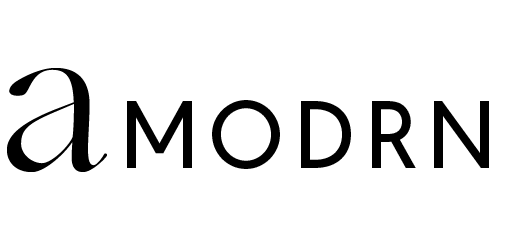Yoga and Pilates are often not seen or spoken about in the same sentence or circle.
Call them cults, but often in the fitness world, there is this strange segregation of the two communities, as if being a yogi requires such a sacred commitment and unspoken loyalty you would be seen dead crossing to the dark side. Or if a Pilates devotee, you would never convert because let’s be frank, you are far more upbeat/hardcore than that.
Yet, arguments aside, in my recent experience—as a passionate yogi and yoga teacher who has had the chance to dabble in more Pilates—I feel it’s my moral duty to help reunite (or in yoga, ‘yoke’—if you will), the two disciplines which equally bring so much joy, strength and body love.
Because here’s the thing, if you let me go a little yogi on you for a second… for every ebb there is a flow, every night there is a day, every light there is dark and for every yin there is a yang.

If we apply this same concept of equilibrium and duality to yoga and Pilates, you could say the two in fact work as a perfect pairing.
How so? Well, after deciding to take on a 30 day Pilates challenge at MPower Pilates in the lead up to my seven day (of 6+ hours a day) yoga retreat and training, I thought it would be the ultimate chance to open my eyes a little wider and see how the two could work side by side.
Here’s what I observed about working with both to achieve #bodygoals and balance.
1. Yoga is often focused on stretching and releasing, Pilates works on tightening and toning.
As a teacher and practitioner, of course yoga still tones the body and helps to reduce flab, but energetically, it’s safe to say in most cases, when you go to yoga, you want to ‘stretch,’ ‘release,’ and ‘relax’ all the tight muscles you’ve managed to build up during the week. Be it from work, other sports or gym activity or sitting down commuting/flying, you crave yoga because you know it will bring a sense of softening, that it will dive deep into that tight fascia network and unknot the tightly wound tissue.
Whereas, Pilates in contrast focuses more on repetition or pulsation of movements to awaken and activate key muscle groups to tighten the body part and over time, tone it. From my experience, what is so addictive about Pilates is for every rep and pulse, you feel the burn, feel the muscle want to spasm and tighten and with it comes this immediate sense of satisfaction, strength and achievement. With yoga, stretching is a slow burn, while providing deep satisfaction after, often not during the moment or as an immediate feeling.

2. Yoga encourages deep exhalations for fascia release, Pilates uses short sharp exhalations for energy.
In yoga, the breath is fundamental to everything. It acts as the life force, the connective element that binds body with mind, helps induce calm and restores balance in the body while also working to release tension and deepen restorative stretches. While there is a series of different pranayama breathing techniques (one of which is more fast and energising), most focus on slowing down the breath or using breath in unison with body, with a focus on the exhale lengthening the pose/stretch.
In contrast, Pilates uses short breath bursts through the mouth, with the exhale being the moment to contract or engage the body part in focus. Almost as if every exhale helps to keep you going and moving, rather than when settling in a juicy deep hold (as you would in yoga).
What I love about this distinct contrast was that in Pilates, an audible exhale is a lot more noticeable and in hearing the exhale through the mouth, it makes you so conscious of your breath, focuses the mind and encourages you to see the benefit of breath for energy. While most of the time I can breathe well in yoga, often the techniques are less audible so it can be easy to lose it and forget… (and therefore not get the true results you want).
3. Yoga focuses on expansion, Pilates focuses on contraction and compression.
In yoga, much like a surfboard, we want to lengthen our frame, to stand tall, long, lean and proud, while still of course strong. In order to achieve amazing posture, there is a focus on expanding through the areas that tend to get compressed/closed in such as the heart, side body and back. The sequences thus work towards ‘opening’ the body/body part.
On the flip side, Pilates, while also big on posture and lengthening, works more towards doing the opposite (to a degree) to achieve a similar result. By focusing on compressing and contracting areas of the body, it works to strengthen the muscles so over time you stand taller as the body naturally feels more able to support you.
Thus, when pairing the two together, it allows the duality of expansion and compression, strengthening and stretching out.

4. Yoga flows with a whole body framework, Pilates targets each muscle group separately.
As a yoga teacher, we know when planning class sequences what exact body parts are being focused on or the body themed direction the class will go—heart, hips, spine etc but in not all cases do we tell the students. And while each well executed yoga class will incorporate a range of asanas to give your whole body a workout, it does often have a strong key focus on one area, while the overall direction of the flow is to achieve a state of calm, bliss, inner contentment etc.
In contrast, when I began practising Pilates regularly the teacher would make it so clear what body part and in fact which tiny muscle needed to be engaged or worked—in fact my teacher Michelle Koton would often come and poke me to really show me where I needed to consciously focus my attention on —which was so great! In isolating exactly which part I needed to engage or activate, it really helped strengthen my body awareness and made each exercise move that bit more effective.
Again though, it’s the marriage of both that I absolutely love. Yoga has a sense of mystery, trust and surrender, with a deep focus on ‘feeling state’ as the theme, whereas Pilates is more anatomical, specific and straight forward.
5. Yoga is fluid, flowing and adaptable, Pilates is focused, regimented and repetitive.
As a Pisces who prefers to go with the flow, I am the first to admit yoga suits my very deeply emotional nature. It allows space for freedom of expression, feeling whatever you are feeling, has a range of modifications, sequence structures, themes and styles (from Hatha, vinyasa, ashtanga to yin). It is also a holistic lifestyle, way of life and philosophy made up of thousands of years of ancient teachings by many gurus, thus it’s steeped in ancient wisdom, an ancient language and has evolved over the years to many different things while maintaining some fundamental roots.
Pilates on the other hand, was founded by Joseph Pilates, who has one set method of 34 original mat exercises and ever since it has remained true within the Pilates methodology and framework. At the heart of it, there is a deep focus on the ‘core’ or ‘centre’ which is the powerhouse that helps control all movements. In Pilates the focus is to activate the centre and from there, everything else will flow.

While Pilates is a very traditional method that requires discipline, repetition and rigidity, the reason you keep coming back is that it works, and well! In fact it’s not easy at all, it’s incredibly hard.
One evening the fun play equipment we use (Springboards and Wunda Chair) were out of action and we had to switch back to the traditional 34 mat exercises. After attempting roll ups, the hundred and the seal, might I just tell you they are no easy feat.
The reward thus comes from not only the sense of strength that you find to constantly show up, practise and repeat until you see progress, but also, sometimes there’s just something so nice about repetition, your mind knows where it’s going and in a focus on physicality, it’s less feeling orientated (and truth be told, sometimes you don’t want to face the heavy emotions in savasana). So in that sense it can be a welcome relief for the mind and your wellbeing (especially if you nail it!).
But of course, as a yogi practising Pilates, it’s this very combo that has made my life all the more well rounded and whole. On days where I need to connect within, to feel, to breathe, flow and let go I have yoga, and on days where I want to feel power, physical challenge, or to balance out the yin, I have my yang in Pilates.




